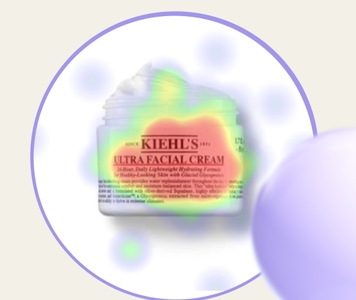As a marketer, you know that attracting demand is crucial to drive sales for a new product. But what if you’ve deployed paid ads and tested heaps of creative expressions against each other, but your conversion rates aren’t where they need to be, what do you do next? If there’s one thing that would help solve this problem, we would undoubtedly say it’s claims testing.
Definition of claims testing in market research
Claims testing is a research methodology that helps you compile, examine and evaluate various assertions or messages that explain the value of your business to your audiences. Those assertions might be found in your product packaging, digital advertising, promotions and even PR statements.
What makes claims testing an essential tool for any marketer is that it can help you target the right people with the right words. When you align the message with the consumers’ needs and aspirations - at the right time in the customer journey - you are always likely to attract more attention and convert more interest.
Why you need to test claims
1. Claims testing helps you determine what matters most to your consumers
Let’s say you want to test the messaging on the packaging design of a granola bar. How do you choose what to emphasize on the pack? Do you want to include claims about the product being made with natural ingredients, Or is it that the bar has 20% more protein? What if you’ve just launched a new flavour, to what extent does the profile need to be claimed?
If you create a variety of claims that isolate these different product features and assess them against each other, you’ll be able to identify which factors your audience cares about most. This will help you not only in your packaging design process, but also help you strategize the marketing messages to lead with when planning promotional initiatives.
2. Claims testing helps you narrow down your scope of work
There are so many things that you might want to say about your product - where and how it was made, which ingredients you’ve used, and how it will make your consumers feel.
And it might be tempting to check all the boxes by including all these messages in your communications. But what if your target audiences care most about just a few of those things? You might risk doubling or tripling your workload, or muddying your go-to-market messaging, instead of working on a handful of key claims that are most likely to drive conversions.
Claims testing in market research allows you to hone in on the most important message ideas, saving you time and resources.
3. Claims testing helps you build the right brand associations
When you test claims, you get a sense of what you want your brand to be associated with in the long term.
Going back to the granola bar example: if you want your brand to be known as one that cares about the health and well-being of your customers, you might want to pick claims that primarily emphasize the bar’s nutritional values or ingredients.
When you create alignment between the claims and your brand, you are likely to create stronger brand equity and perfect your communications for the future.
Example of claims testing
To show you claims testing in action, let’s dig into the study Upsiide created to track what consumers think about sustainability, and sustainable product claims, in the consumer packaged goods (CPG) space.
We’ve analyzed a representative group of 500 shoppers in the US and Canada and examined which on-pack sustainability claims they find the most appealing.
Before we go further, let’s give you some context. Upsiide bases its ranking on three individual scores. The Interest Score determines whether a respondent likes a claim. The Trade-off Score tracks whether they choose one claim over other options. Finally, the Upsiide score is a composite metric that’s based on the combination of the Interest and Trade-off Scores and has been calibrated to predict the sales in-market.
To avoid bias, we’ve tested claims that were related to sustainability (e.g. “recyclable” and “environment-friendly”) and those that weren’t (e.g. “edible” and “made in the USA”).
So what did we find from our study?
It appears that, while many people care about consuming sustainably-made food and drink products, there were other things that mattered to them more. Claims like “heart-healthy”, “made in the USA'' and “edible” topped the charts across all groups, earning Upsiide scores of 86, 85 and 81, respectively (out of 100). At a surface level, it could mean that shoppers are more concerned about basic needs such as the food’s impact on health and where it was made.
But those numbers only get more interesting when you analyze them according to factors like age, education and shopping habits.
For instance, the connection between ‘Heart healthy’, ‘Made in the USA’, and ‘Re-sealable’ could indicate an older demographic - who are concerned about their health, who are patriotic, and who focus on tangible, practical issues over wider and less tangible concerns like the environment.
This is just the outer layer - there are some far more surprising results in-store. If you’re curious to learn the other insights we found from our Sussing Out Sustainability study, read the full article at the link below.
To conclude
The role of claims testing in market research is invaluable. Whether you’re designing new packaging or marketing messages, or are simply looking for the right words to test in your ad copy, assessing your claims will help you find the right words for the right people.




